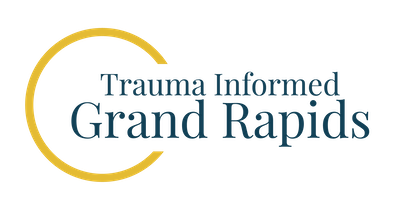Life can be hard at times. It can also include suffering. Sometimes, life can be traumatic. For some, suffering is chronic and intense. Like a long train, that never seems to end, there seems to be no way through the suffering or stresses. Each of us reacts differently to the stresses in life depending upon our age, support system, relationships, safety, self-agency, coping skills, biology, and temperament. When trauma continues to linger and affect daily life, the trauma becomes pos-traumatic stress disorder (PTSD).
Most people recover from a traumatic event. Others do not and may find themselves constantly reliving the trauma. For these individuals the memory is alive and their body is essentially stuck reliving the memory. This is a painful cycle and exhausting to go through. It takes support, work, and learning new skills to overcome PTSD. The good news is, you can help others with PTSD.
Children are particularly vulnerable to developing PTSD due to biological and developmental age factors. Those who live in poverty, are marginalized, or live in violent situations often cannot find a way out alone. They need support. You can be that support, the kindness, the resource that provides another step out of pain and suffering.
While there are many reasons to learn about PTSD, I will share three here.
Prevalence of PTSD
You may know someone who suffers with PTSD. Statistics show most of us do. 3.6% of adults over the age of 18 and 5% of adolescents have been identified as having PTSD (NIMH). The National Center for PTSD shows that 7-8% of us will have PTSD at some point in our lives, with the number of women suffering from PTSD (10%) higher than that of men (4%). Probably all of us can count ten women we know well. Statistically, one of them will suffer with PTSD.
Prevention of PTSD
Whether or not someone will develop PTSD is not always predictable. Every individual responds to trauma differently. For most of us, traumatic events will not develop into PTSD. A good support system, safe relationships, a variety of self-care tools, our age and development, genetic makeup, safety, biology, and temperament all interplay together to determine how we process traumatic events.
Research shows that a consistent factor in helping individuals avoid developing PTSD is safety; safe people and a safe environment. Safety allows the individual to begin to recover from the traumatic experience. When you feel safe you can decompress and begin to process the traumatic event. When you are in the presence of a safe person, or in a safe place, your body does not need to fight to survive, it can relax and begin to regulate and process the trauma. This is a critical step. You can be that safe person for someone. You can help them find a safe place to decompress. Trauma is about being disconnected, and safe relationships help restore a needed sense of connection.
While people who have PTSD may need social support, they often will retreat from relationships. They may experience a multitude of feelings such as shame, helplessness, despair, embarrassment, loss of emotional control, or feeling misunderstood. By understanding that these reactions occur you can provide acceptance and support and bring someone back into the relationship.
Promote Healing of PTSD
Supporting people who have PTSD is important for their mental health and well-being. You may be that critical link between PTSD and healing. Being present for someone with PTSD can calm their nervous system, help them feel connected, and be supported. Your presence and caring can help an individual who suffers from PTSD know that in a time when they feel they cannot go it alone, they have someone who will love them and help them go forward. When you show someone that their fears and battles will not scare you away, you help them feel that maybe they too can handle the fears and battles.
When you build a safe and trusting relationship with someone who has PTSD, you can offer support, love, and acceptance. You may also have the opportunity to open a discussion about finding professional help. Help them look for someone trained and experienced in PTSD. Being a friend who is present through challenges alongside professional guidance can help someone move from being ‘stuck’ in past trauma to moving forward and living a more free and fuller life. As you walk with them through the journey, you will also find yourself becoming a more compassionate, accepting, and knowledgeable person in the process.
Help make the world a better place. Learn all you can about PTSD. For more information check out the tips and links below.
If someone has PTSD, you may notice the following behavior:
• Trouble sleeping
• Angry outbursts
• Repeated memories of traumatic event(s)
• Often in a state of hyperarousal, or agitated
• Avoidance of people, places, events that may trigger distressing memories
• May shut down or draw inward
• Negative thought patterns
• Trouble remembering things, processing information, or making decisions.
References
DeAngelis, C. (2008). Helping families cope with PTSD. American Psychological Association (APA). https://www.apa.org/monitor/jan08/helping
Help for post traumatic stress disorder. https://www.psychiatry.org/patients-families/ptsd
Helping someone with PTSD. (n.d.). https://www.helpguide.org/articles/ptsd-trauma/ helping-someone-with-ptsd.htm
How common is PTSD in adults? (n.d.). https://www.ptsd.va.gov/understand/common/ common_adults.asp
Post traumatic stress disorder (PTSD). (2017). https://www.nimh.nih.gov/health/ statistics/post-traumatic-stress-disorder-ptsd
Sawchuk, C.N. (2018). Post traumatic stress: How can you help your loved one? https:// www.mayoclinic.org/diseases-conditions/post-traumatic-stress-disorder/expert-answers/ post-traumatic-stress/faq-20057756

